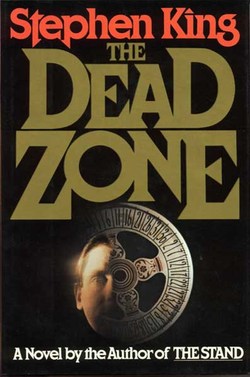After his massive, multi-character book, The Stand, Stephen King drastically reduced the size of his cast and delivered what was his most accomplished book to date. Years later, even after writing Cujo, Firestarter, Different Seasons, Pet Sematary, Christine, all the Bachman books, and co-authoring The Talisman, King would say in an interview, “The best I’ve done so far is The Dead Zone because it’s a real novel. It’s very complex. There’s an actual story. Most of my fictions are simply situations that are allowed to develop themselves. That one has a nice layered texture, a thematic structure that underlies it, and it works on most levels.” Not only was The Dead Zone his first number one bestseller on both the hardcover and the paperback lists (which he attributes to the care being taken with his books by his new publisher, New American Library), but it was also a book that took a giant risk and helped to nail down exactly what it is that makes Stephen King so successful.
King considered The Dead Zone a new beginning to his career, saying that the books that came out after The Stand were “different books than what went before.” On an obvious level they were different because King was no longer with Doubleday, and because these books were tightly focused on a small number of characters (something that would continue through It). But as different as The Dead Zone seemed it was still very much a Stephen King book, meaning that psychic powers were a major part of the narrative (it was his fourth novel out of five to put psychic events front and center), and its main characters were blue collar residents of Maine. But it’s inarguable that King was approaching his familiar subjects and themes with a new maturity.
opens in a new window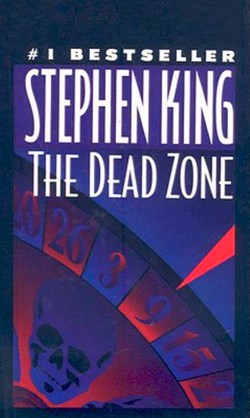 The Dead Zone was also one of his riskiest projects. King is a character-based writer whose books are less about plot and story and more about deep explorations of character, and The Dead Zone was about his most unsympathetic character yet: not just a political assassin, but a failed political assassin. His hero, Johnny Smith, wasn’t a Lee Harvey Oswald or a John Wilkes Boothe, who at least achieved lasting notoriety, but more of a Samuel Byck, or an Oscar Ramiro Ortega-Hernandez. Who? Exactly. The most pathetic losers in the American canon of crazy people are failed assassins: crackpots who can’t even carry out their own loony plans, doomed to ridicule and obscurity.
The Dead Zone was also one of his riskiest projects. King is a character-based writer whose books are less about plot and story and more about deep explorations of character, and The Dead Zone was about his most unsympathetic character yet: not just a political assassin, but a failed political assassin. His hero, Johnny Smith, wasn’t a Lee Harvey Oswald or a John Wilkes Boothe, who at least achieved lasting notoriety, but more of a Samuel Byck, or an Oscar Ramiro Ortega-Hernandez. Who? Exactly. The most pathetic losers in the American canon of crazy people are failed assassins: crackpots who can’t even carry out their own loony plans, doomed to ridicule and obscurity.
The Dead Zone also gets to the heart of what makes King so successful. A lot of horror novelists write about an outside evil—a haunted house, a serial killer, a horde of zombies—that afflicts their main characters, but from King’s earliest short stories like “I Am the Doorway” (1971) and “Gray Matter” (1973) to the present, he wrote about protagonists who turned into someone, or something, else. Whether it’s Carrie White slowly morphing into her own mother in Carrie, Jack Torrance turning into his own abusive father in The Shining, or, in a far cruder way, the inhabitants of Jerusalem’s Lot turning into vampires, King liked to use his massive page counts to suck away his main characters’s humanity, transforming them into monsters.
opens in a new window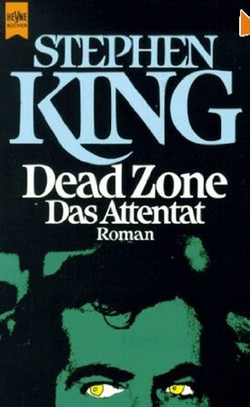 This kind of mutation into monstrosity by the main character or someone close to them is a hallmark of some of the most successful horror novels (The Exorcist, Rosemary’s Baby, The Haunting of Hill House) and King’s later books would turn these screws masterfully (lovable ol’ Cujo’s helpless transformation into a killer, It’s heroic children transforming into broken-down adults and back into children again). It also mirrored the transformation of King, who was turning into a monster himself around this time, by all accounts (including his) thanks to a combination of cocaine, three gallons of beer a day, and a whole lot of money. But in The Dead Zone, as well as in Firestarter and The Shining, the transformation is linked to the character’s psychic powers.
This kind of mutation into monstrosity by the main character or someone close to them is a hallmark of some of the most successful horror novels (The Exorcist, Rosemary’s Baby, The Haunting of Hill House) and King’s later books would turn these screws masterfully (lovable ol’ Cujo’s helpless transformation into a killer, It’s heroic children transforming into broken-down adults and back into children again). It also mirrored the transformation of King, who was turning into a monster himself around this time, by all accounts (including his) thanks to a combination of cocaine, three gallons of beer a day, and a whole lot of money. But in The Dead Zone, as well as in Firestarter and The Shining, the transformation is linked to the character’s psychic powers.
When Danny Torrance used his powers in The Shining he was possessed/visited by a separate person named Tony. In The Dead Zone and Firestarter, Johnny Smith and Charlie McGee essentially turn into Tony when they use their abilities. Their eyes change colors, their voices sound like “someone else,” and their personalities become hard and cruel. In both books there’s also a grander transformation at work. In Firestarter, Charlie transforms from a little girl holding her daddy’s hand to an independent woman in control of a power that can “crack the world in half.” In The Dead Zone, Johnny turns from a kind, ordinary schoolteacher who “nobody can stay mad at” into Jared Lee Loughner.
opens in a new window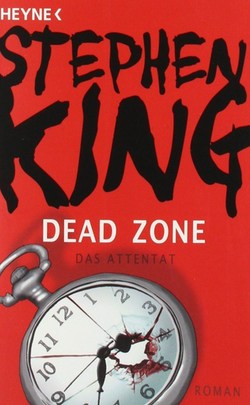 In On Writing King makes it clear that The Dead Zone arose from two questions, “Can a political assassin ever be right? And if he is, could you make him the protagonist of a novel?” King stacks the deck in Johnny’s favor by giving him the ability to see the future, so that when he has a vision of Greg Stillson, his target, launching World War III, there’s no reason to doubt that he’s doing the right thing. But, years later, in On Writing, King complicated the issue by writing, “Johnny is different from other violent, paranoid mystics in only one way: he really can see the future. Only don’t they all say that?”
In On Writing King makes it clear that The Dead Zone arose from two questions, “Can a political assassin ever be right? And if he is, could you make him the protagonist of a novel?” King stacks the deck in Johnny’s favor by giving him the ability to see the future, so that when he has a vision of Greg Stillson, his target, launching World War III, there’s no reason to doubt that he’s doing the right thing. But, years later, in On Writing, King complicated the issue by writing, “Johnny is different from other violent, paranoid mystics in only one way: he really can see the future. Only don’t they all say that?”
When the book opens, John is a nice schoolteacher in love with another nice schoolteacher. Fortunately, by this point in his career, King could write nice guys without boring everyone to tears. Just compare Johnny Smith and his girlfriend, Sarah Bracknell, to Ben Mears and Susan Norton in ‘Salem’s Lot, his previous attempt at a nice young couple. There’s something tedious and artificial about Susan and Ben, whereas Sarah and John feel genuine and grounded. They’d better be, because the first 40 pages are taken up with the story of one of their dates.
opens in a new window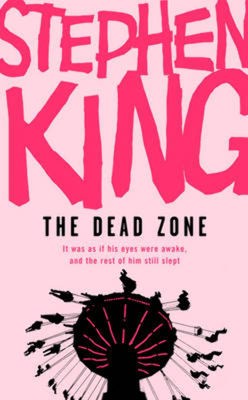 Hitting the county fair, we meet the book’s first heavy-handed symbol as Johnny uses his psychic talents to clean up at the Wheel of Fortune. Meanwhile, Sarah reminds us that we’re reading a Stephen King book when she barfs all over everything after eating a bad hotdog. Johnny takes her home and, instead of making love for the first time (or making “the love” as King referred to it throughout The Stand), Johnny acts the gentleman and takes a cab home. Big mistake. The cab gets in a head-on collision, Johnny falls into a coma, and he doesn’t wake up for 4 and-a-half years. When he regains consciousness, Sarah has gotten married, Johnny can barely walk, and he can see the future whenever he touches someone. Vera Smith, his crazy Christian mother, is thrilled and proclaims that Johnny is on a mission from God.
Hitting the county fair, we meet the book’s first heavy-handed symbol as Johnny uses his psychic talents to clean up at the Wheel of Fortune. Meanwhile, Sarah reminds us that we’re reading a Stephen King book when she barfs all over everything after eating a bad hotdog. Johnny takes her home and, instead of making love for the first time (or making “the love” as King referred to it throughout The Stand), Johnny acts the gentleman and takes a cab home. Big mistake. The cab gets in a head-on collision, Johnny falls into a coma, and he doesn’t wake up for 4 and-a-half years. When he regains consciousness, Sarah has gotten married, Johnny can barely walk, and he can see the future whenever he touches someone. Vera Smith, his crazy Christian mother, is thrilled and proclaims that Johnny is on a mission from God.
Vera Smith joins the ranks of Stephen King’s crazy Christian army, like Mrs. Carmody in The Mist and Margaret White in Carrie. It would be easy to complain about King mocking Christian cartoons, except that both Margaret White and Vera Smith are right. Carrie does do the Devil’s work after wearing her trampy dress to prom, and Johnny really is on a mission from God, although there is a teasing ambiguity as to exactly what his mission is.
opens in a new window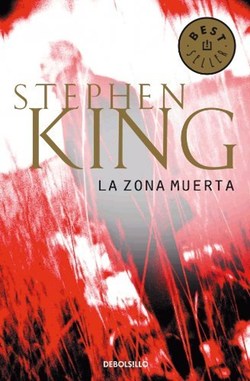 Johnny spends years recovering from his coma and the painful surgeries to lengthen his tendons in his legs, and for over 100 pages we pretty much just sit in his room with him like we’re on the longest hospital visit ever. It’s not until page 214 that something finally happens: the sheriff of Castle Rock (the first time the fictitious town would appear in print) calls asking for help catching a serial killer. Johnny bungles his way through the investigation, becomes famous when his powers help police catch the killer, and a media circus threatens to eat him alive. And so he disappears and becomes a private tutor.
Johnny spends years recovering from his coma and the painful surgeries to lengthen his tendons in his legs, and for over 100 pages we pretty much just sit in his room with him like we’re on the longest hospital visit ever. It’s not until page 214 that something finally happens: the sheriff of Castle Rock (the first time the fictitious town would appear in print) calls asking for help catching a serial killer. Johnny bungles his way through the investigation, becomes famous when his powers help police catch the killer, and a media circus threatens to eat him alive. And so he disappears and becomes a private tutor.
His first and only student is Chuck Chatsworth, the pampered, learning disabled child of a rich daddy. Johnny helps Chuck overcome his reading difficulties, and we get what would be the ending of a simpler book. On Chuck’s graduation day, Johnny warns his parents that party central for the senior class is going to catch on fire. Chuck and a hundred kids stay home, but 81 partying seniors are burned to death in a freak fire (30 more are burned badly). The press go bananas again, Johnny goes into hiding once more, only now he’s convinced that his mission from God is to kill congressman (and one day a potential presidential candidate), Greg Stillson.
opens in a new window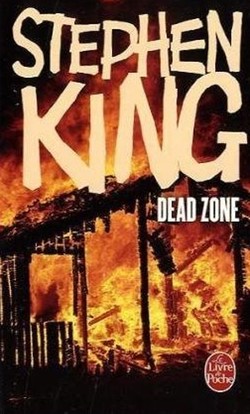 By the time Johnny shakes Greg Stillson’s hand at a New Hampshire election rally and gets a flash that he’s going to start World War III, we already know he’s a bad guy. The FBI are on the trail of this buffoonish Tea Party-esque candidate who might just be the most cartoonish politician ever to appear in a book. He has a cadre of evil biker bodyguards, he makes reporters “disappear,” and he threatens opponent’s families. To top it all off, we first meet him kicking a dog to death while selling Bibles. He may as well be wearing a flashing neon sign: this man is kuh-razy.
By the time Johnny shakes Greg Stillson’s hand at a New Hampshire election rally and gets a flash that he’s going to start World War III, we already know he’s a bad guy. The FBI are on the trail of this buffoonish Tea Party-esque candidate who might just be the most cartoonish politician ever to appear in a book. He has a cadre of evil biker bodyguards, he makes reporters “disappear,” and he threatens opponent’s families. To top it all off, we first meet him kicking a dog to death while selling Bibles. He may as well be wearing a flashing neon sign: this man is kuh-razy.
But by the time Johnny gets involved with Stillson, he’s plenty crazy too. Exhibiting all the classic behavior of the lone gunman, he suffers from mysterious headaches, isolates himself from his family and friends, and in a closing section it’s revealed that he’s also developed a whopper of a brain tumor. But the reader is still on his side because we knew him before his transformation into a monster. The reader becomes Lee Harvey Oswald’s mother, defending her son to the press for the rest of her life because we saw our boy grow up, we know he’s not bad, he wouldn’t kill a politician in cold blood. Unfortunately, he doesn’t.
opens in a new window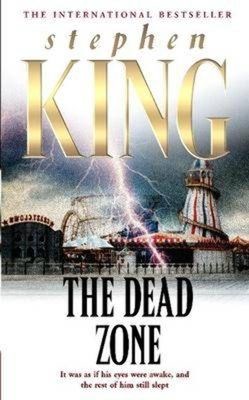 Worried that a future presidential assassin might cite The Dead Zone on his list of influences, King wrote an ending that saw Johnny’s assassination attempt panic Stillson, causing him to grab a baby and use it as a human shield. Photos of his cowardice sink his career, but it’s too late for Johnny, who dies in a hail of bullets. It’s an ending that King describes bluntly as “something of a cop-out” and he’s not wrong. King has written the biography of a young sociopath, and then refused to stick the landing, and it ruins what might be a trickier read of the book. It may not be exactly what King intended at the time, but there’s an obvious, slightly alternate, reading of the book that can’t be ignored: what if Johnny is crazy?
Worried that a future presidential assassin might cite The Dead Zone on his list of influences, King wrote an ending that saw Johnny’s assassination attempt panic Stillson, causing him to grab a baby and use it as a human shield. Photos of his cowardice sink his career, but it’s too late for Johnny, who dies in a hail of bullets. It’s an ending that King describes bluntly as “something of a cop-out” and he’s not wrong. King has written the biography of a young sociopath, and then refused to stick the landing, and it ruins what might be a trickier read of the book. It may not be exactly what King intended at the time, but there’s an obvious, slightly alternate, reading of the book that can’t be ignored: what if Johnny is crazy?
We assume that Johnny’s mission is to kill Greg Stillson simply because Stillson gets so much page time. But what if Johnny’s mission from God was to save Chuck and his classmates from a horrible fire, and his assassination of Stillson is a misunderstood extra credit mission? There’s no reason to doubt the veracity of Johnny’s visions as they’re presented in the book, but that later comment from King in On Writing suggests that even he thinks that there’s another possibility. What if Johnny’s brain tumor was affecting his visions? As King points out, Johnny claims to see the future, but so do all isolated, hard-drinking maniacs with a hunting rifle, pounding headaches, and a copy of some politician’s public schedule. Stillson’s cowardice during the assassination attempt allows the characters in the book to expose him for the thuggish maniac he is, but if Stillson simply died at Johnny’s hands the official narrative would be that he was a hero of the people, gunned down by a crazy person who claimed to see the future. It’s a much more disturbing book, like something called John Hinckley Jr. Was Right, written by Stephen King, and whichever side you come down on, King was aware in retrospect that his book was big enough to accommodate both versions.
opens in a new window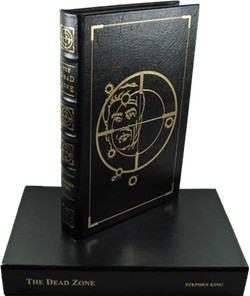 Fortunately, King is on fire as a writer at this point in his career and even a “cop-out” ending can’t mar his book too badly. The actual final chapter is pretty astounding, especially when you compare it to the movie-of-the-week broadness of the ending of an earlier book like The Shining. Sarah, now married and with two children, visits Johnny’s grave and mourns the lost future they could have had together. She’s convinced that their “what might have been” is where she could have been truly happy, rather than the compromise-riddled marriage she’s stuck with in real life. Feeling Johnny’s ghostly presence she reconciles herself to the here and now with a sigh of “Same old Johnny,” then drives away.
Fortunately, King is on fire as a writer at this point in his career and even a “cop-out” ending can’t mar his book too badly. The actual final chapter is pretty astounding, especially when you compare it to the movie-of-the-week broadness of the ending of an earlier book like The Shining. Sarah, now married and with two children, visits Johnny’s grave and mourns the lost future they could have had together. She’s convinced that their “what might have been” is where she could have been truly happy, rather than the compromise-riddled marriage she’s stuck with in real life. Feeling Johnny’s ghostly presence she reconciles herself to the here and now with a sigh of “Same old Johnny,” then drives away.
That “Same old Johnny” echoes throughout this book, a reminder that the man who was wracked with headaches, hid from his friends, and tried to kill someone for reasons no one will ever understand, is the same sweet guy she was in love with at the beginning, the same lover of corny jokes, the same idealistic schoolteacher. We are who we are, King seems to be saying, no matter how famous, or infamous, we become, no matter how much strangers think they know us. Even if fame, or bad luck, or some kind of special talent turns us into a monster, that’s not so bad. After all, every monster has a mother, every maniac has a girlfriend, every lunatic has hopes and dreams, and even Lee Harvey Oswald had a wife.
Grady Hendrix has written about pop culture for magazines ranging from Playboy to World Literature Today. He also writes books! You can follow every little move he makes over at his blog.










